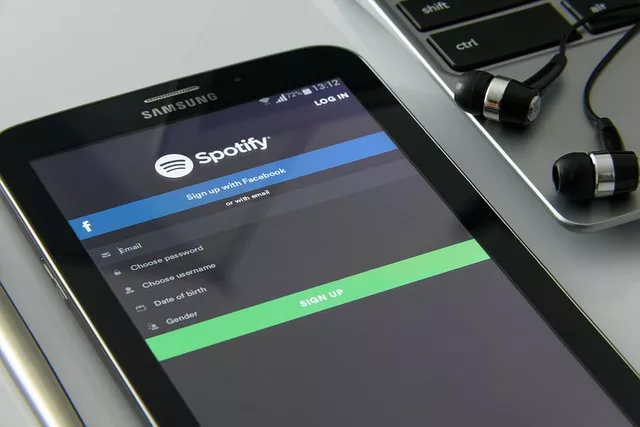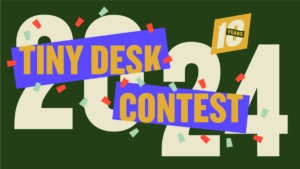Spotify changes rarely, if ever, benefit unsigned and indie artists. Here are some potential Spotify changes that could change all that.
There are no two ways about it: Spotify changes to their royalty model are almost never a good thing for unsigned or indie artists. And in case you haven’t heard, Spotify’s royalty model looks to be changing again sometime next year.
These incoming Spotify changes will include a minimal threshold of streams before an artist can begin earning royalties. And that means it’ll get that much harder for unsigned and indie artists to make any money from Spotify. They’re also shifting $1 billion in payouts to so-called “legitimate artists and rightsholders”—a move that could mean independent artists will earn less so those acts signed to AAA label record deals can earn more.
We should preface all of this by stating that no, most local and regional artists aren’t seeing much money, if any, from streaming services. As a local artist, you’ll probably find more money in your couch than Spotify pays out currently. Though on paper, these incoming Spotify changes make it sound like Taylor Swift and James Hetfield will get a chance to shove their paws between your couch cushions before you do.
Now, I could certainly write a scathing op-ed about Spotify and other streaming services doing almost nothing to help unsigned and indie artists grow. But I think the Internet is already packed to the gills with more than enough of that sort of energy. So instead, let’s try something that’s almost unheard of these days. Let’s take a crack at offering solutions, rather than gripes.
Spotify changes that could, in theory, help unsigned and indie artists
We should take a moment to specify that yes, we get it: Spotify is a business, not a charity. It could even be argued that Spotify is helping unsigned and indie artists already by hosting their music files, despite not generating much revenue in doing so. You can host your music on the same platform as Foo Fighters, Led Zeppelin, and Ariana Grande. Your music can reach an audience without needing to invest in CD printing or vinyl pressing. Your fans can crank up your music and drive to work jamming out to your stuff. That’s certainly a good thing, for marketing and exposure if little else.
All of that Devil’s Advocate stuff aside, though, Spotify isn’t particularly friendly to unsigned or indie music acts. Getting your music in front of potential fans can be an uphill fight, especially in an environment where Spotify’s algorithms reward popularity with more popularity while seemingly punching down on unsigned and indie artists who are hoping to grow.
So what, then, could Spotify do differently to help unsigned and indie artists prosper? What Spotify changes could be implemented to help working-class artists? And how could they realistically and fairly implement these Spotify changes without hurting the company’s bottom line? We have some ideas!
Our top choice for potential Spotify changes: localized independent artist playlists
Here’s the easiest, cheapest solution we’d like to propose: Spotify could create Local Music Spotlight playlists. A Spotify-generated playlist featuring artists not signed to mainstream labels that hail from your own area or region. With some fine-tuning to their algorithm, this playlist might prioritize acts from within 50 to 200 miles of your city or town, with acts getting stronger priority the closer they are to you.
The music acts that perform well in these localized playlists—the bands generating the most streams and earning the most user-created playlist adds based on localized analytics—could then be rewarded by featuring them on Discover Weekly, Daily Mix, and enhanced user playlists for users in that region. And this could help those artists reach far bigger audiences and nudge them closer to featuring on playlists outside of their own local areas.
These Spotify changes would mean local artists could connect more easily with local audiences. They’re also getting a better shot at exposure, too. And you could also argue it would help Spotify better identify those “legitimate artists” as well. Spotify could use local metrics to see if a music act is locally popular. And that would help indicate whether they’re a real artist with human fans, or just putting out noise tracks to game the system.
Allow artists to manually add their live music events
Spotify does a decent job of letting you know what live music events are happening in your area … for bigger artists, anyway. You’ll almost never see local events showcased. And that’s because local bands don’t typically use the ticketing services that partner with Spotify to promote those events.
As it stands, music events are only showcased on Spotify if you’re selling tickets through Ticketmaster, Eventbrite, or another ticket service partnered with Spotify. There are useful third-party services like Songkick and Bandsintown that can get your music featured on Spotify’s events, too. But cutting out middlemen wherever possible seems like a good theme for these proposed Spotify changes, doesn’t it?
Spotify could make some fairly simple UI changes to allow local artists to share their upcoming live events directly. Artists could publish their own events manually, without needing to sign up for other services. And without needing to make morally objectionable deals with Ticketmaster, which I imagine involves pricking your thumb and signing your name with fresh blood on a stone tablet while shadowy crimson-robed figures hold crying newborn babies above their heads under a full moon. Oh, that wacky Ticketmaster!
Related: How much does a band earn per gig/ show?
Better revenue insights
Here’s another potential Spotify change that would help artists drastically. They could improve revenue insights, so artists know how much they’re earning, and how and why they’re earning it.
Spotify’s revenue model is confusing and complicated. They’re not offering a flat rate to every artist. And worse, they aren’t doing a very good job of explaining how and why artists earn what they earn. This certainly factors heavily into why so many unsigned and indie artists are unhappy with the platform. It’s one thing to earn nothing or next to nothing from Spotify. But to not even understand how or why you’re earning so little? That just frustrates everyone that much more.
So how does Spotify fix this one? That’s easy: they just give artists access to a monthly financial report. This screen would provide artists with some high-value insights into how and why they’re earning revenue. They could see revenue per song, per album, etc. They could track financial performance over time. Spotify could show them how much each song is earning and better explain why the song is earning what it’s earning.
A better Spotify blog wouldn’t hurt!
I’ve spent the past 15-ish years working as a professional blogger, first in politics and then as a corporate marketing cog content manager and writer. I think I’m decently qualified to say whether a blog is good or coming up short. And Spotify’s blog? It looks beautiful … but it could definitely use some work. At least in terms of how useful it is for unsigned and indie artists, anyway.
Spotify’s blog is heavily centered on marketing, and hey, that’s fine. But it certainly wouldn’t hurt to put out more information that could help unsigned and indie artists. High-value informational content doesn’t always check every analytics box or present maximized potential for calls to action, but it does actually, you know, help readers. And despite what the brass might shout at meetings, that really is the whole point of a blog. Some content managers forget that, but it’s true! Really!
Spotify’s blog could easily feature a whole new category focused on helping independent artists prosper. This content could explain payout models in depth. Explain how to optimize artist profiles. Give shout-outs to unsigned artists making strides. Heck, even wander into Parlor City Sound’s turf with guides and tutorials on home recording and business management and whatnot. Providing reader value for working-class musicians and helping them navigate the platform would only have upsides for Spotify and for artists alike.
Allow acts to make social-style posts on artist profiles
The last, and perhaps the most technically complicated, of our proposed Spotify changes? Allow artists to publish posts on their Spotify artist profiles.
Simply put, this would allow artists to write social media-style posts on Spotify, with updates for their fans. The logistical stress of this feature could be mitigated with some simple and reasonable limitations—caps on file size, word count, etc. Community-based moderation means the overhead for Spotify rests almost entirely in developing the feature.
This move would help democratize the platform, after a fashion anyway, and help artists connect more easily with fans. And artists and fans forming stronger connections means fans are visiting those artist profiles more frequently, which in turn means Spotify is seeing the songs published by those acts bring in more spins.
Related: Making an electronic press kit: why your band needs an EPK
These Spotify changes could make a world of difference for independent artists
Will any of these Spotify changes ever see the light of day? We can hope for it, but we caution against anyone holding their breath. Spotify doesn’t have a great track record of supporting smaller artists who aren’t signed to major labels. These changes could definitely help unsigned and indie acts grow and could help combat fraud on the platform. But Spotify has consistently stuck to the calculus that the more streams and playlist adds an artist has, the better they must be for Spotify.
Having said that, we do hope Spotify sees the common sense at play here. They like to tout themselves as artist-friendly. They say combating the fraudulent abuse of their platform is something they’re serious about. It’s difficult to argue that these ideas for Spotify changes wouldn’t help on both of these fronts.
These proposed Spotify changes would help fans find more music they’ll love. They’d help artists find bigger audiences and get more tangible value out of sharing legitimate music on Spotify. And Spotify sees increases in user and artist satisfaction, which provides obvious value to their company and their platform. Everyone can win here. The only question really is whether Spotify cares enough to make it happen.






